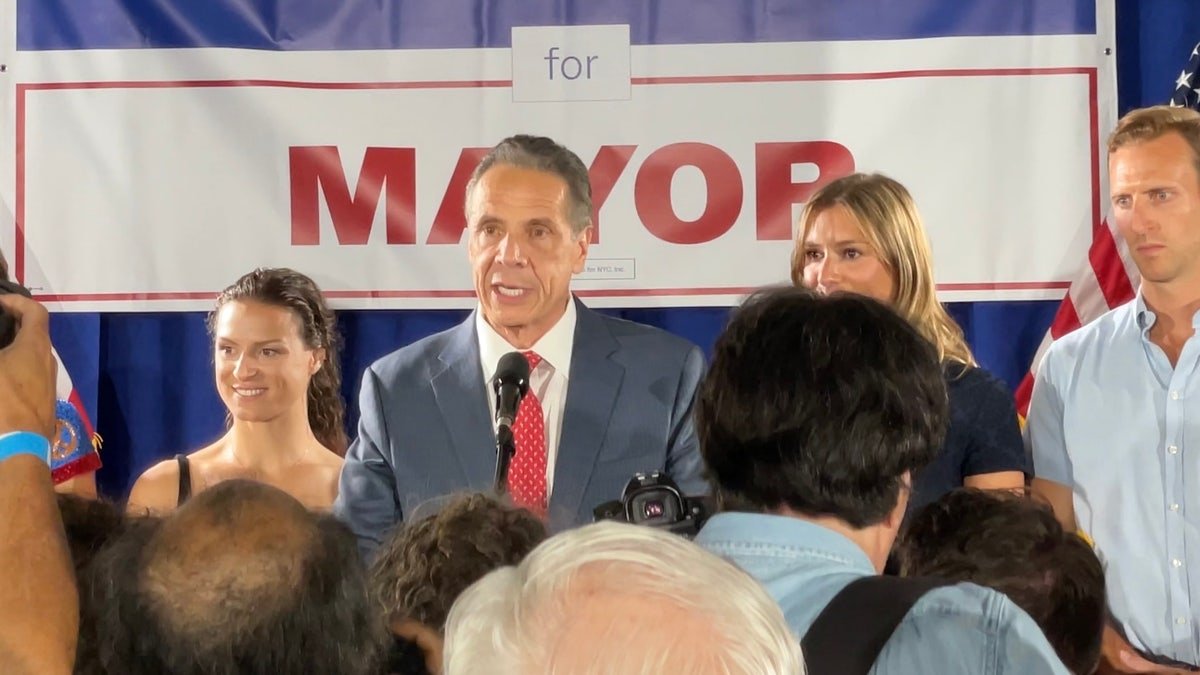NewYou can now list for Fox News articles!
Andrew Cuomo says he goes the distance.
The train three-year-old New York Governor, who was defeated last month by double digit by Democratic Socialist Zohran Mamdani in New York City’s democratic mayor’s primer, Monday Annoudéd he will continue his general election as an independent candidate.
“Only 13% of New Yorkers vote in the primary in June. The common choice is in November and I’m in it to win it,” Cuomo declared in a video that was sent to social media.
And Cuomo accused that “my opponent, Mr. Mamdani Slogans offers, but no real solutions.”
Cuomo, Adams is about shooting over who will drop in the race against Mamdani for NYC mayor
Form Gov. Andrew Cuomo and Zohran Mamdani emerged as the Frontrunns of New York’s mayor’s primmer. (AP/Reuters)
Mamdani’s primary victory over Cuomo and nine other candidates three weeks ago shook the Democratic Party and increased the Ugandan-born 33-year-old Statelyman from Queens to become the first Muslim mayor of the nation’s most populous city.
Mamdani officially wins nyc them Primary with 12 points over Cuomo staying in the race for now
Mamdani rose to a primary victory thanks to an energetic campaign that put a strong focus on affordable prices and New York’s high cost of living.
Mamdani used smart use of social media platforms, included Tiktok when he engaged voters with low propensity. He offers eliminated prices for riding in New York City’s huge bus system, making Cuny (City University of New York) “Teaching Free”, freezing rents on municipal housing offering “free childcare” for children up to 5 years and creating government -run merchant shops.
And partly thanks to the efforts of a massive grassroots army of volunteers, he rode a wave of support from younger and progressive voters to catapul to first place over Cuomo, who was the front runner.

Form Gov. Andrew Cuomo recognizes that Zohran Mamdani won the New York City Democratic Party Mayoral Primary on June 24, 2025. (Paul Steinhauser – Fox News)
“Unless you have lived under a cliff, you probably know that the democratic primary did not go as I had hoped,” said Cuomo, the form three-year-old governor received from the office in 2021 in the middle of several scandals.
Cuomo, shooting after a political comeback, pushed it, “As my grandfather used to say when you are beaten, teach the lesson and choose yourself back and get into the game. And that’s what M will do.
At an approval event on Monday, Mamdani responded to Cuomo’s movement.
“I welcome everyone to this race, and I’m as safe as I’ve been since this week since on the primary evening,” he said.

Zohran Mamdani speaks to supporters during an election night on June 24, 2025 in Queens Borough in New York City. (Michael M. Santiago/Getty Images)
“”I think he is struggling to come to terms with what Tuesday meant, “added Mamdani.” We spent a whole campaign that was told it was inevitable for Andrew Cuomo to become the next mayor and he thought it himself. “
Mamdani also Trolled the Education Governor Monday and responded to the photo of Cuomo, filming his campaign video.
“We made him make a man on the street videos with a guy in Carhartt. Next week he sips Adeni Chai and eats Khaliat Al Nahl,” Mamdani said, referring to his own viral campaign videos.
The message from Cuomo came as no major surprise.
While recognizing Mamdani’s victory in the primary, Cuomo left the door open to November run as an independent candidate, which election rules in the New York State permit.

Mayor Eric Adams speaks during a press conference in City Hall, December 12, 2024, in New York. (AP Photo/Yuki Iwamura, File)
And late last month, Cuomo passed a deadline for candidates who had already qualified to run as independent to reject the independent Boullot line.
But sources told Fox News at the time that Cuomo had not yet entered into to have run an active election campaign throughout the summer and into the author.
In Deep Blue New York City, the Democratic primary winner is widely preferred to win the election. If Mamdani wins in November, he will be the first Muslim and Millennium Mayor of New York City.
Also on the vote in the general election is democratic mayor Eric AdamsIt fell its primary bid earlier this year in the middle of sinking voting figures in the wake of several controversy.
Adams runs as independent.
Click here to get the Fox News app
Also on the vote in the election, Jim Walden, is a federal prosecutor who runs as independent, and Guardian Angels co -founder Curtis Sliwa, who for another equal election is the Republican mayor nominated.
